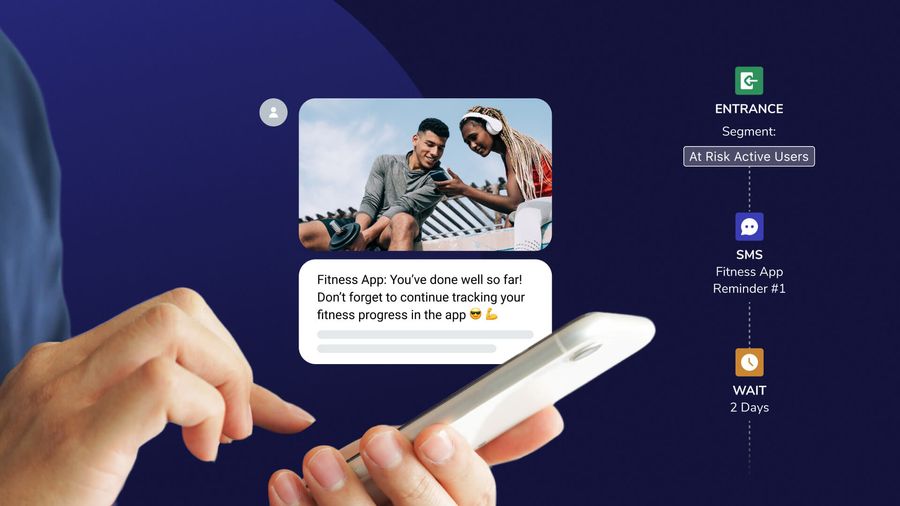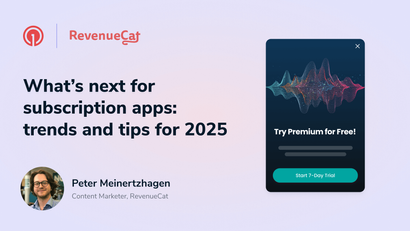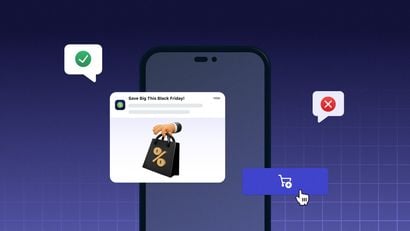Creating an effective mobile app marketing plan for your business is no small undertaking.
Here, we’ll break down some steps and strategies you can use to build and execute the most effective marketing plan for your mobile app.
1) Align With Organizational Goals
In order to properly execute an effective mobile app marketing plan, you’ll want to first align your goals with your organization as a whole by consulting with your development teams, product teams, and the marketing department itself. Basing your mobile app marketing plan on the overarching goals of your organization will be critical in funneling your efforts into the right functions across your team. Developing your marketing plan with a basis in your app monetization model, product roadmap, and development goals will only help you optimize results of your plan.
Once you’ve aligned your marketing goals with your organizational goals, you can take a calculated approach to creating a strategy that will address every phase of your mobile app funnel— from awareness to acquisition to retention to monetization.
2) Conduct Competitive Research
Marketing to your mobile app users without first understanding the scope of your target market is an easy way to waste valuable time and resources. In order to avoid going in blind, you’ll need to conduct extensive research on your space, your customers, your app journey, and more.
The first step in this process should be conducting research on your competitors. What other apps are in your space? Who are your direct and indirect competitors? How is it that your offering is different from theirs?
Beyond identifying the other mobile apps in your space with a similar product offering, you’ll also want to address how it is that they’re promoting their app throughout its lifecycle. You may want to take notes on how many downloads they have in the app store, their target consumers, their positioning and messaging strategy, and more.
For instance, perhaps you’re preparing to launch a new dating app that caters to animal lovers. Upon conducting competitive research, you might discover that there are many companies that message users with dog-first positioning. You may then decide to cater your marketing approach in a cat-first way, because you’ve identified a gap in the market.
2) Understand Your Users
When you develop marketing messaging for your target audience, you’ll need to have clearly nailed down your target personas. Who are your users? What do they care about? What type of spending power do they have?
Breaking down who your users are, what they care about, and what their behavior is like will help you develop messages for your audience across their journey. For instance, if you know that your animal-loving audience cares most about cats, you can later develop cross-channel messaging campaigns leading with cat-themed promotions and deals.
In addition to these basic persona characteristics, you should also nail down where it is your users are most present, when it comes to their channel and device preference. Are you catering to a predominantly Android or iOS userbase? Where are your users located? Doing so can inform the way your marketing strategy fuses with your user experience, or UX, across your audience’s most popular devices.
Nailing down your users will help you subsequently design campaigns that are optimized for the device type and platforms that your users are most active on.
3) Improve Discoverability
An important element of any business’s monetization strategy is customer acquisition. You’ll want to put energy into your mobile app user acquisition strategy to incentivize initial downloads. In order to do so, you can consider tactics such as optimizing your app store listing, improving your SEO, launching ads, and more.
App Store Optimization (ASO)
Before your users can benefit from your app, they need to become aware of it. That's why mobile app companies are putting energy into the process of App Store Optimization to increase downloads, which ultimately leads you to grow your userbase. Available data shows that app store search drives 65 percent of app downloads.
ASO is a process that you’ll undertake for both iOS and Android App stores that aims to place your app ilisting higher in search results. It can also be beneficial in helping you decrease acquisition costs by improving organic, rather than paid discoverability. ASO can be conducted for regional audiences and differs between operating systems.
4) Enhance Usability
User experience is the name of the game when it comes to effectively retaining your users in the long-run. That’s why you should be thinking of creative ways to enhance the usability of your app within your mobile app marketing plan.This can mean crafting creative messages for your users at the right time to solve friction points in the user experience, or it can me directly embedding important CTA’s and driving conversions at strategic points in the app experience as a part of your overarching mobile app marketing plan. To further reinforce the value of mobile app marketing, the following statistics give you some key context on the industry standards at play.
- For every dollar spent on UX design, companies see an ROI of 100 dollars
- Over 30 percent of customers would leave a brand they previously liked after a single negative interaction.
- 80 percent of mobile users indicated they would only attempt to use a problematic app three times or less.
These statistics go to show that for mobile first companies, user experience is an unforgettable piece of your app’s experience. Sending transactional and marketing messages to improve your app’s usability at critical moments of user churn can bolster your marketing strategy as a whole and lead to long term retention for your platform.
When you map your user journey in your initial research phase, you’ll likely notice moments when users fall off the bandwagon, or abandon your app experience. For example maybe you notice that users tend to churn your retail app after they’ve placed and received their first order. This could be an important moment to send a marketing message via SMS that cross-sells a similar product to the one that they previously purchased. This example also illustrates the importance of tracking your users’ behavioral and purchase data throughout the lifecycle in order to enhance your marketing efforts. .
Our client Buenbit, for instance, collects in-app purchase data on their crypto app users and layers this data with their messaging strategy in order to bring users back at critical churn points in their app experience, all without developer resources needed.
5) Improve Onboarding Flows With Strategic Messaging
In the mobile app user lifecycle, onboarding is a critical step that can make the difference between hooking and later retaining your audience, and losing them at an early touchpoint. One key way you amplify your mobile app marketing strategy is by optimizing your onboarding communications. You may want to message your users before, during and in the middle of onboarding in order to promote stickiness at this critical touchpoint.
Onboarding flows popular in the mobile app industry include progressive onboarding, which gives users hints and explanatory text as users move through different pap screens, benefits oriented, which showcases why a user should use your platform as users are getting acquainted with your app’s functionality, and function-oriented, which is an onboarding style dedicated to showcase the basic functionality of your app. To present engaging on boarding flows, you’ll want to play with an omnichannel or cross-channel approach that can leverage email, push notifications, in-app messaging, and more.
To deploy smoother onboarding flows, you can use in-app messaging for instance, or even in-app carousels, to better retain users through the onboarding process.
In-App Messaging Carousels
With screens of customizable, no-code content, you easily set up a flow to walk users through your product. You can even introduce users to a new feature and showcase how it works before presenting a CTA to try it out. Carousels let you use multiple cards to clearly break down your product or its functionality step by step to engage users.
6) Collect User Feedback
One of the simplest ways you can cater your mobile app marketing plan to best serve your end goal is to collect direct customer feedback. This is how you can most effectively understand what parts of your product are satisfactory to your users, where it is that their engagement lags, and what elements of your app experience are lackluster for the average user. Your users’ opinions, both positive and negative, can drive the success or failure of your marketing plan. Their feedback can point to what aspects of your acquisition, engagement, and retention are working, and which of these areas deserve more time and marketing resources.
Some of the learnings you get in this process will have easy solutions that you can solve with better promotional efforts, for example, such as email campaigns making your product offerings clearer, or little gaps in the user experience, such as a user not receiving order confirmations in real time, which could be resolved with a strategic SMS upon order delivery, for instance.
Add Messaging Capabilities to Your App for Free
OneSignal is designed to help you send notifications and seamlessly manage your user communication across a variety of channels, including mobile push notifications, web push notifications, bulk SMS, in-app messaging, and email. Our platform is quick to set up and makes it easy to send eye-catching messages without doing any development work. If you don't have a OneSignal account, you can create one for free and start sending push notifications to your users today. Don't take our word for it — simply sign up and see for yourself!
Get Started for Free



